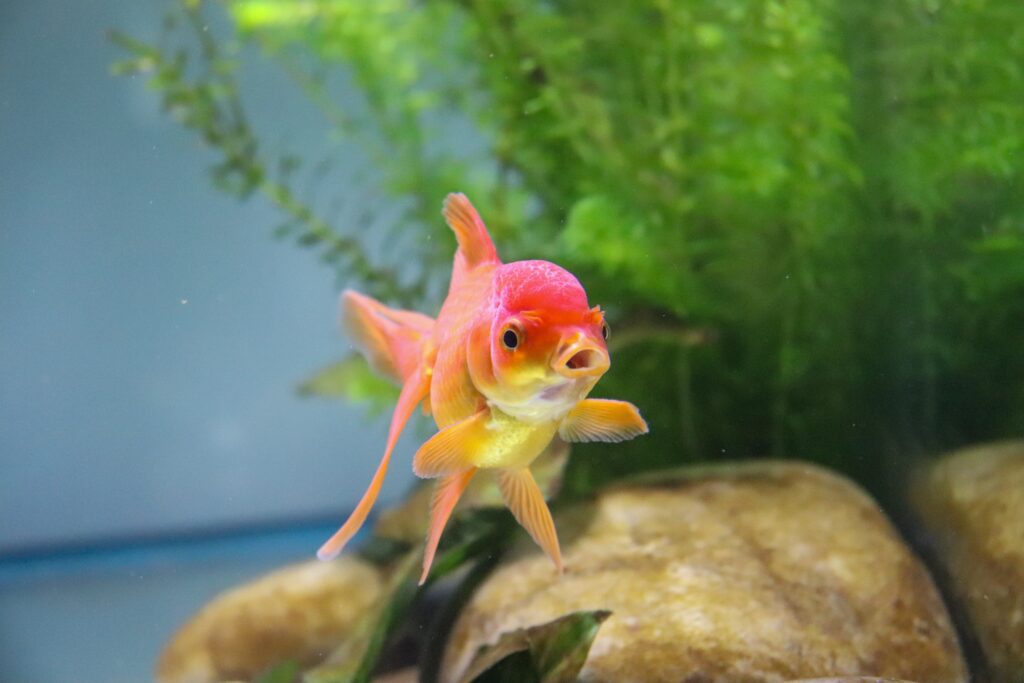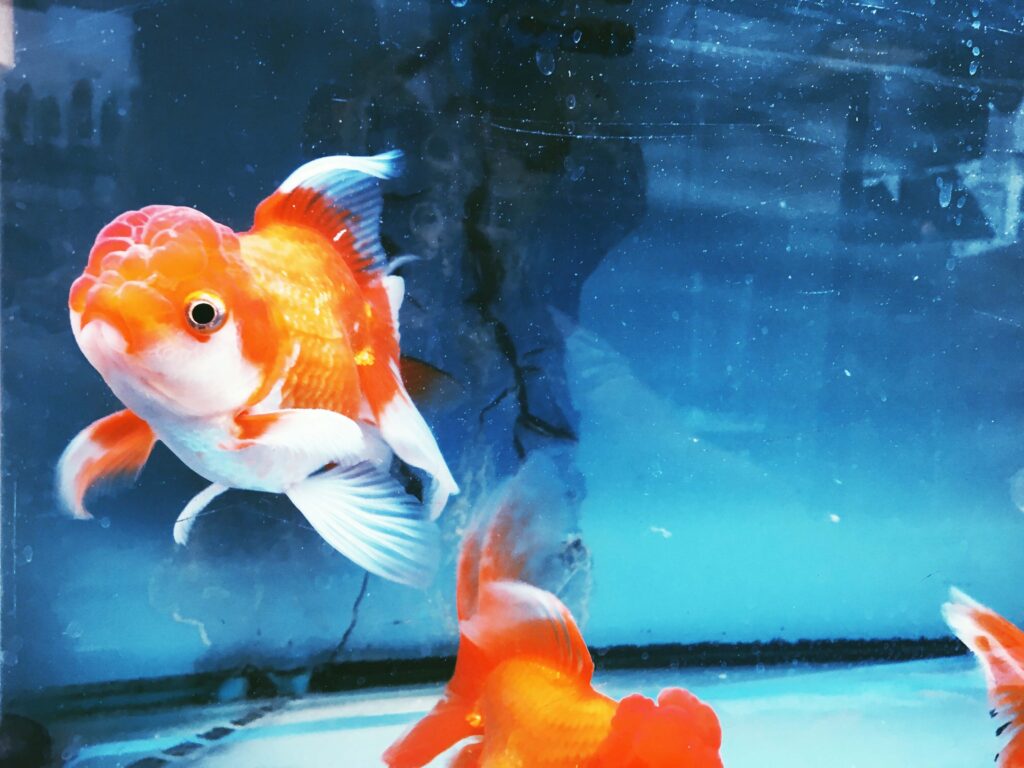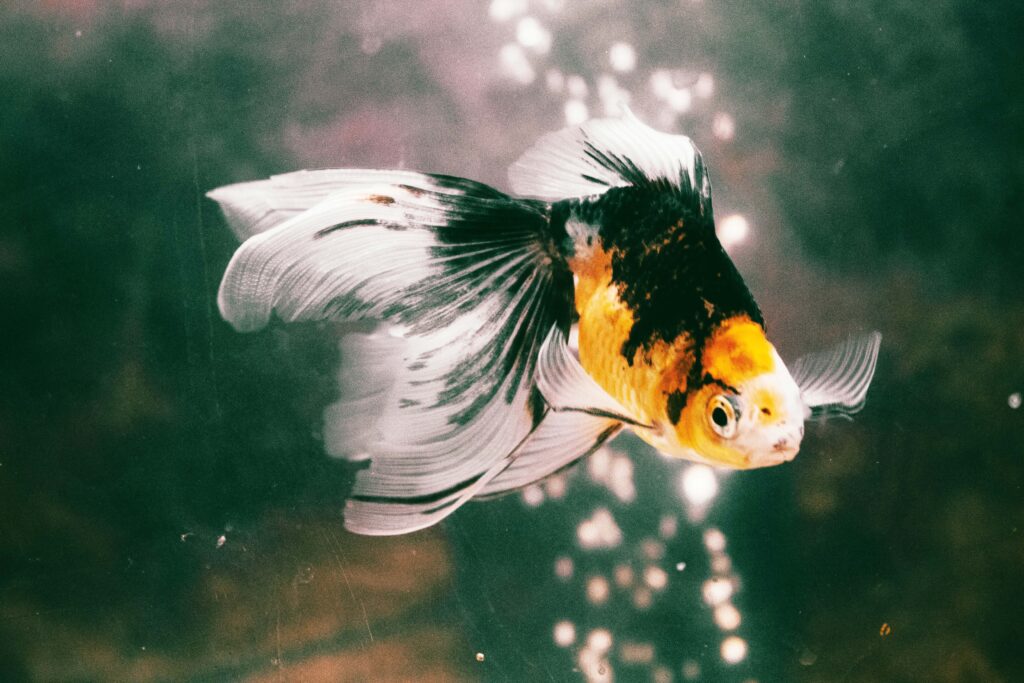Chronicles of a Finned Friend: The Goldfish Diaries

by Stefanie Michaels
It’s been a long while since I owned fish. It all started with the first goldfish I won from my grade school’s fair—this tiny being looking back at me from its temporary plastic bag home.
It wasn’t long before I would rush home from school to endlessly watch Bubbles in the fish bowl peering back at me or going to the top of the water, grabbing bubbles, and going down to his solo neon pink coral to release them. Hence his name.
I loved that darn fish until one day, he met his demise when my cat, Tinkerbell, shoved her paw into the water, and he flipped on his back and rose to the top of his domain.
Through my tears, I told my parents that Bubbles had a heart attack. I believed he was young, so I was all the more in tears for this alone.
In my teens, I begged for a small tank after witnessing the magic of my friend’s setup, complete with suckerfish and tiny adorable water frogs, which would sit on the bottom rocks, then poke up to the top for air, then head back down to mosey around eating things.
I’m now coming full circle in my want for another iteration fish tank filled with a goldfish and tiny frogs.
There are some steps to take, of course. The first is learning about goldfish—the “starter fish” for a tank.
Where did goldfish originate from?
Goldfish originated from China and were first domesticated over a thousand years ago during the Tang Dynasty (618-907 AD). They were initially raised for food, but they were selectively bred over time to enhance bright colors. They were then introduced to Japan and eventually the rest of the world—a popular pet and symbol of good luck and prosperity.
Small goldfish, such as the ones commonly sold at fairs and pet stores, can grow large if given proper care and living conditions. Depending on the species or variety, they can grow anywhere from 4-12 inches or more.
Here are some things to consider before owning a goldfish:
- Living Space: Goldfish can grow quite large and require a large tank or pond. A 20-gallon tank is a minimum for one fish and an additional 10 gallons for each extra fish, but a larger tank will be needed as the fish grow. It’s crucial to upgrade the tank as they grow.
- Water Quality: These type of fish produce a lot of waste, so a sound filtration system is essential to keep the water clean. It’s also important to do regular water changes and monitor the water parameters.
- Temperature: Goldfish need a heater in their tank to maintain a consistent water temperature between 65-75 degrees Fahrenheit.
- Diet: Being omnivores, they require a diet of both plant and animal matter. Pellets or flakes specifically formulated for goldfish can be fed but should be supplemented with fresh fruits and vegetables.
- Longevity: They can live for 10-15 years, so it’s a long-term commitment.
- Socialization: Goldfish are social animals and do best in groups, so consider getting at least two goldfish.
- Health: They are susceptible to several diseases and parasites, so it’s a must to watch for any signs of illness and seek veterinary care if necessary.
- Cost: Owning one can be relatively inexpensive, but the costs of equipment, food, and maintenance should be considered.
- Time: They require regular care, including feeding, tank cleaning, and monitoring water quality, so it’s crucial to have the time to care for them properly.
- Responsibilities: As a pet owner, you should ensure that your fish lives in a healthy environment and receives proper care and nutrition.
How much do goldfish cost?
Small ones can be purchased for a few dollars at pet stores, fairs, or carnivals. However, these goldfish tend to be of poor quality or be unhealthy. Purchasing a goldfish from a reputable breeder or pet store can cost more, ranging from $5 to $25 or more for a single fish, depending on the variety, size, and quality.
Plus, an investment in equipment, such as tanks, filters, heaters, food, and other accessories can add to the overall cost.
How much is the equipment?
The cost of equipment for can vary depending on the size of the tank or pond, the type of filtration system, and any additional accessories you choose to purchase.

Here are some basic costs you may expect:
- Tank or Pond: A primary 20-gallon tank can cost around $30 to $50, while a larger tank can cost $100 or more.
- Filtration system: A good filtration system is important to keep the water clean and can range from $20 to $100.
- Heater: A heater must maintain a water temperature between 65-75 degrees Fahrenheit. Depending on the size and quality, they range from $10 to $50 or more.
- Accessories: Thermometer, water conditioner, and aquarium decor can range from $5 to $50 or more.
- Lighting: Goldfish need natural light to stay healthy, and a light fixture can cost around $20 to $50 or more.

Would it be good to get a sucker fish for the tank?
A sucker fish, also known as a Plecostomus or Pleco, can be an excellent addition to a goldfish tank as a cleaner fish.
Plecos are known for their ability to clean tanks by eating algae and other debris, which can help to keep the tank clean and reduce the frequency of water changes. However, it’s important to note that plecos can grow quite large, some species can reach up to 2 feet in length, so it’s vital to get a species that will stay small enough to fit in your tank and not outgrow it.
TIP: Don’t place the tank in direct sunlight, as it can quickly create algae growth.


